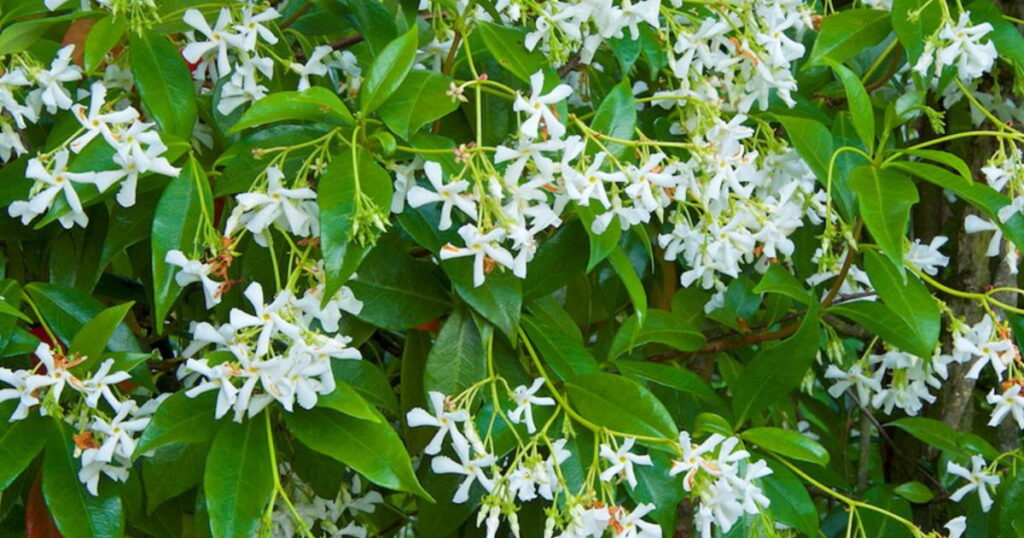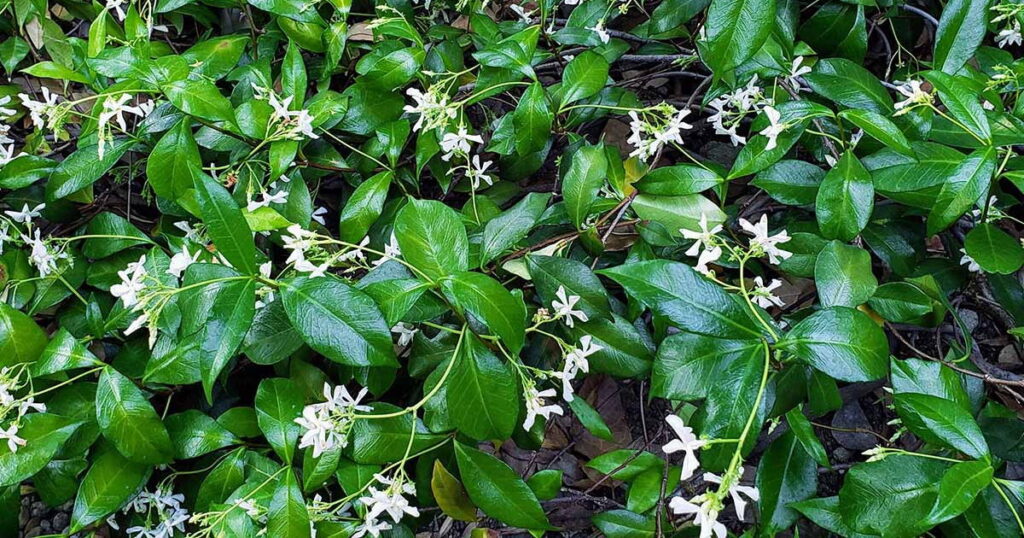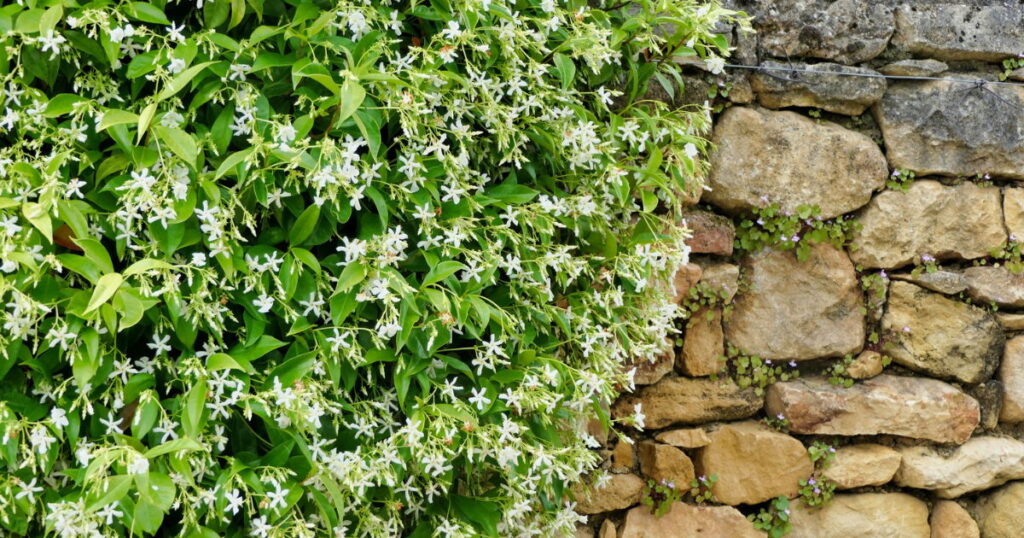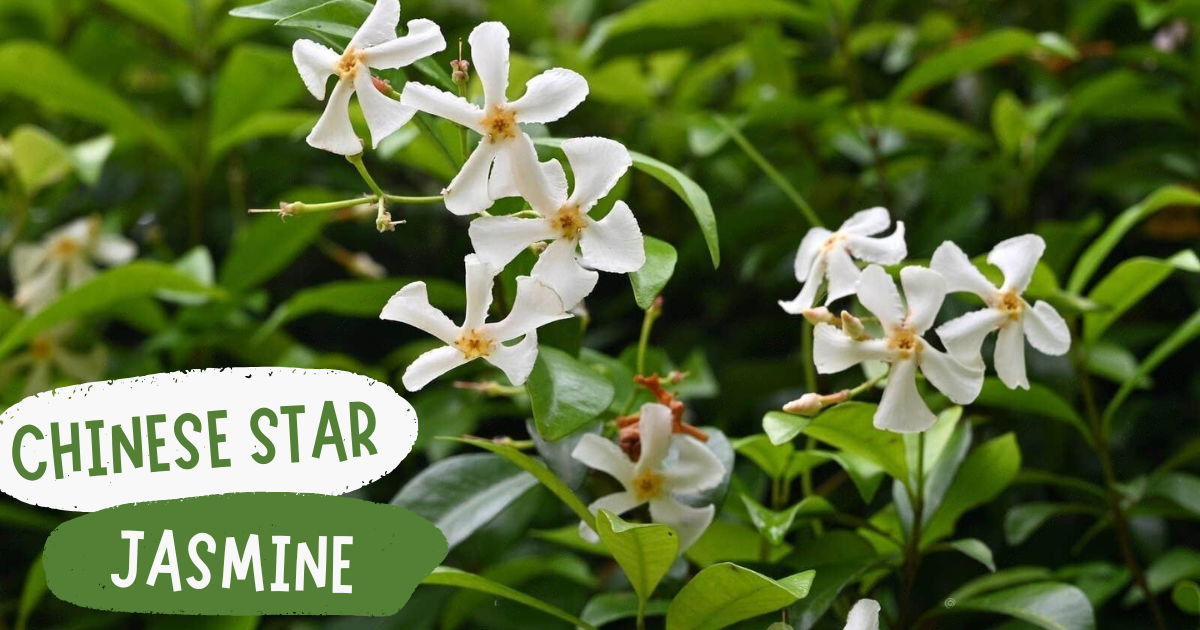Star jasmine is a versatile plant known by many names, such as Chinese Star Jasmine and Confederate Jasmine. It is an Indigenous species that grows in southeastern Asia. Still, star jasmine is not considered valid for people new to the jasmine realm because it belongs to the Trachelospermum genus, not the Jasminum genus. This woody plant develops unfading foliage that can reach a height of 10 ft when given a proper environment. You can grow them as gorgeous vines because of their twining capabilities. Some people also use them as a ground cover. When the branches of star jasmine touch the wet soil, they start developing aerial roots, which can be used for preparing a new plant.
The leaves of confederate jasmine are dark green, and in spring and summer, you will see twinkling five-petalled star-like white flowers on the plant, creating an enchanting environment with its sweet and light fragrance.
Chinese Star Jasmine can be used in various ways to transform landscapes and gardens. You can train them on your terrace and create a cascading effect, or grow them in pots and place them parallelly on your patio entry for the classic look. However, one thing you must consider before placing or planting star jasmine is that it requires full sun to thrive and produce abundant blooms. California and the southeast United States are optimal for growing confederate jasmine plants (Hardiness Zone – 8-10 ).
Ideal Growing Conditions – Chinese Star Jasmine

Light Requirements
Star Jasmine loves to receive shiny rays. Still, it can adjust in different lighting conditions, like semi-shaded areas, but you will see comparatively fewer flowers when planted in sunny areas. Protect your plant from the intense scorching sunlight if you live in hotter regions.
Soil Needs
Chinese star jasmine feels comfy when planted in slightly acidic, well-draining soil. I know you are eager to plant, but you amend your soil by mixing 1 part organic compost or vermiculite and 1 part worm castings before planting. Either prepare the soil for potted star jasmine or plan to plant it in the ground. The process of enriching the soil with nutrients is the same.
Tip – Always ensure that your pot has a drainage hole. If not, make one at the bottom.
Humidity & Temperature
The environment temperature and humidity play a vital role in plant growth; providing the right environment unlocks all the hidden potential of your plant. 65 F to 75 F ( 18 C to 24 C ) is the temperature zone where your plant feels most comfortable.
If you are witnessing less flowering, drooping buds, and yellowing of the leaves, your Chinese star jasmine plant signals that it is under temperature stress.
Humidity
Yup, they are humidity-loving plants, especially in hot climatic conditions. Misting or arranging a humidity tray will make them happy.
Tip – Excessive humid environments may lead to fungal infections. So, redressing the balance is the key.
Watering & Fertilization

Star jasmine is known for its drought-tolerant abilities, but at its initial phase, it requires regular watering to develop strong roots. Your watering schedule also depends on your area’s climatic conditions. Still, there’s a thumb rule among gardening enthusiasts that your plant demands water when the upper layer of the soil feels dry after touching.
Fertilization
Feeding your Chinese star jasmine plant at the right is vital, especially at its initial stage and before its blooming season. Pick a slow-release NPK 10:10:10 fertilizer. Always read the label on the bottle before applying any fertilizer. Overdosing the plant can create problems like root damage, slow growth, and soil crust; your plant may even die in the worst case. The Chinese star jasmine blooming season starts in early spring, so fertilize it before spring arrives to enjoy an abundance of bloom.
Pruning & Training
Pruning is the best way to keep your plant on a safer side while maintaining the look of your plant. Pruning the dead, damaged, and diseased foliage will make your plant healthier, and you will see the results in the next flowering season. It will also promote new growth, but pruning at the right is crucial; summer is the perfect time to prune your jasmine plant.
After pruning, when you start seeing fresh vines, you can train them as you want or try a completely different look.
Propagation Techniques

Suppose you are new and don’t want to invest in plants or opportunities that don’t offer a chance of getting a free plant. You have spotted a Chinese star jasmine plant in your neighbor’s or public garden. Your job is done; with specific propagation techniques like stem cutting and layering, you can easily double your plant for your garden.
Here’s a step-by-step guide for propagating Chinese star jasmine plant –
- Spot a vigorous vine with healthy and fresh leaves on it.
- Cut a vine 6-8 inches long right below a leaf node.
- Remove the leaves from the lower part of the vine.
- Dip the lower part of the vine in a rooting hormone powder. It will increase the chances of developing roots.
- It’s time to plant your cutting into a well-draining potting mix.
- After planting, shower the plant and keep the soil moist. After a few weeks, it will develop the roots, and congratulations, you have successfully propagated your new plant.
Common Problems & Solutions
Spider mites, aphids and scale insects can target your plant’s foliage and devour your plant’s sap, affecting your plant’s health. Knocking them off from your plant is crucial at their initial stage, or they can double their population in no time. You can try different chemical insecticides to deter them, but before using chemicals on the plan, I suggest you try natural insecticidal soap or neem oil solution to deter these pests.
At Last
Growing and maintaining Chinese star jasmine is easy, but the intoxicating flowers it gives as a reward are more than you have done for this plant. The way star jasmine can transform your garden, patio, and backyard is fantastic, so if you’re an expert or a greenhorn gardener missing this plant, it’s time to add these starry beauties.

